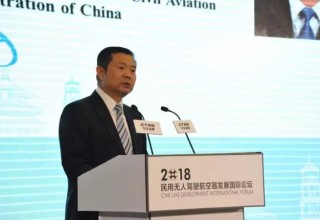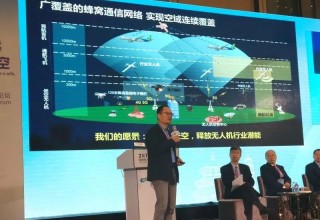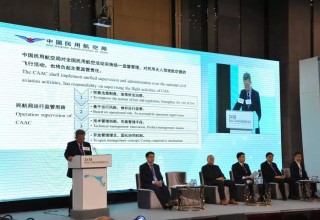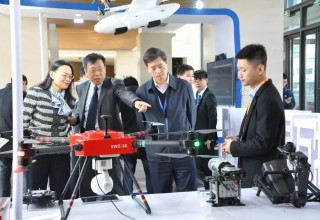
DIAMOND BAR, Calif., March 28, 2018 (Newswire.com) - On March 22-23, 2018, the “International Forum on the Development of China’s Civilian Unmanned Aircraft” hosted by the Civil Aviation Administration of China and the Civil Aviation Management Institute of China and supported by Ewatt Aerospace, was held at the Beijing Civil Aviation International Convention Center.
International organizations from the International Civil Aviation Organization (ICAO) and the European Aviation Safety Agency (EASA), national relevant ministries and commissions, provincial and autonomous regional governments, manufacturing companies and operating companies attended the forum. The event focused on issues related to civil unmanned aircraft regulations and standards systems, operation management concepts and planning, new trends in technology development and supervision of key technical support.
As an important partner of industrial-grade drones in various fields, Ewatt Aerospace was invited to participate in this grand event. Ewatt shared examples of civil drone industry technology applications and discussed power inspections, emergency rescue, channel inspections, news, cinema, fire, as well as police applications, with many future prospects.
At the meeting, Li Jian, deputy director of the Civil Aviation Administration, gave an in-depth speech on the theme of the forum and expressed his hopes for the future of drones. He said: "With the combination of unmanned aircraft, using internet, big data, artificial intelligence and other new technologies, UAVs will become a driving force for new innovations in the aviation sector and promote consumption upgrades."
While discussing key technical support and interoperability topics, the president of Huawei's Wireless X Labs research and development, Ying Weimin, released a speech on "Mobile Communications to Help Unmanned Aircraft Industry Development". "Let us profoundly realize that the era of 'network-linked sky technology' is coming under the impetus of industrial integration and big data", said Ying.
Drones create unlimited possibilities for the future of the industry
At the forum, Ewatt Aerospace’s Helicopter Technology Director James Luo, Ph.D., delivered an in-depth analysis of power inspections with unmanned aerial vehicle systems which promoted new technologies for interpretation.
James said, “With the development of science and technology, drones are also becoming more and more popular in the civil field. Currently, drones have been successfully used in film and television aerial photography, surveying and mapping, power communication inspections, geological exploration, disaster relief and rescue, and energy conservation and environmental protection. More and more industries are hoping to replace traditional working methods with drones.”
Taking the power grid as an example, the traditional model requires two people to work for up to one week and costs tens of thousands of dollars to rig up an almost one-mile cable. In this process, obstacles must be overcome in the roads, rivers and valleys, etc., and UAVs can do the job in a very short time. Drones reduce an issue from a week to only a few minutes of work, lowering the cost to a few hundred dollars and time saved on the job. Therefore, the use of UAVs is not the icing on the cake, but an absolute solution to the industry's difficult obstacles.
Despite numerous cases, James Luo emphasized that we are entering an era of convergent innovation. The drone industry is also an industry that involves many disciplines and technologies, and a large number of application innovation points need to be further explored. James also expressed that we should not be limited to existing technologies. We should speed up the integration of new technologies such as artificial intelligence, the Internet of Things and new materials in the field of drone systems, further delving into scenarios and application integration, and make drones smarter and more efficient. James also pointed out that intelligence, non-linear control methods of UAVs, and real-time use are the future of drone applications.
Source: Ewatt Aerospace
Share:



